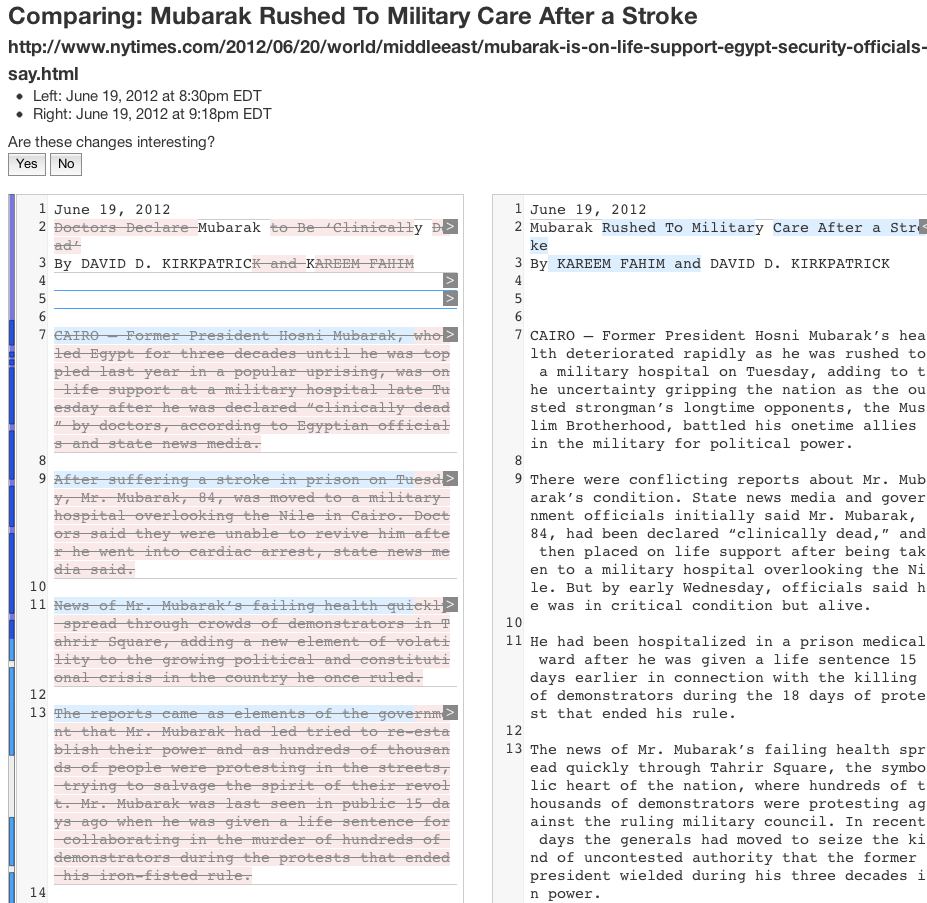This week saw a rush of conflicting reports about the state of former Egyptian President Hosni Mubarak’s health.
At first state media reported he was clinically dead, but the country’s military and others denied that was the case. As of now, Mubarak is alive but in a coma.
Because the initial reports came from Egyptian state media, it’s no surprise news outlets around the world made note of that news. Most cited the source of the report, thereby hedging the information and noting it had not been independently confirmed.
One example was The New York Times, which had a report online at or before 8:30 p.m. on June 19 that led this way:
Former President Hosni Mubarak, who led Egypt for three decades until he was toppled last year in a popular uprising, was on life support at a military hospital late Tuesday after he was declared “clinically dead” by doctors, according to Egyptian officials and state news media.
But soon conflicting reports began flowing in, and by 9:18 p.m. it had a new lead:
President Hosni Mubarak’s health deteriorated rapidly as he was rushed to a military hospital on Tuesday, adding to the uncertainty gripping the nation as the ousted strongman’s longtime opponents, the Muslim Brotherhood, battled his onetime allies in the military for political power.
There were conflicting reports about Mr. Mubarak’s condition. State news media and government officials initially said Mr. Mubarak, 84, had been declared “clinically dead,” and then placed on life support after being taken to a military hospital overlooking the Nile. But by early Wednesday, officials said he was in critical condition but alive.
The current version of the story is here.
This kind of iterative journalism is the norm online for breaking news, and the Times was right to attribute the claims of Mubarak’s so-called death in its first version.
But if I have one quibble it’s that both reports cite “officials.” Did one group of officials get it wrong the first time, and a different group get it right soon after? Or was it the same group of officials? We don’t know. That’s a problem with using a general term and not being specific. (The current version of the story offers a reference to “an Interior Ministry spokesman,” which is better.)
What’s perhaps most notable about this example is how easy it was for me to see the different versions. That’s thanks to a new project I wrote about earlier this week, NewsDiffs.
It enables you to view the changes made to some of the stories that appear on the homepages of The New York Times and CNN.
One of its creators, former Times reporter Jennifer 8. Lee, emailed the link to the NewsDiffs page for the Times’ Mubarak story to show the utility of the tool. It’s a great look at how a story can change so quickly.
Here’s a screen shot of the side-by-side comparison (click for larger):
Related disclosure: Craig Silverman was a candidate for The New York Times Public Editor job when he wrote this story.







